What Is Smarter Customer Service and Why It Matters
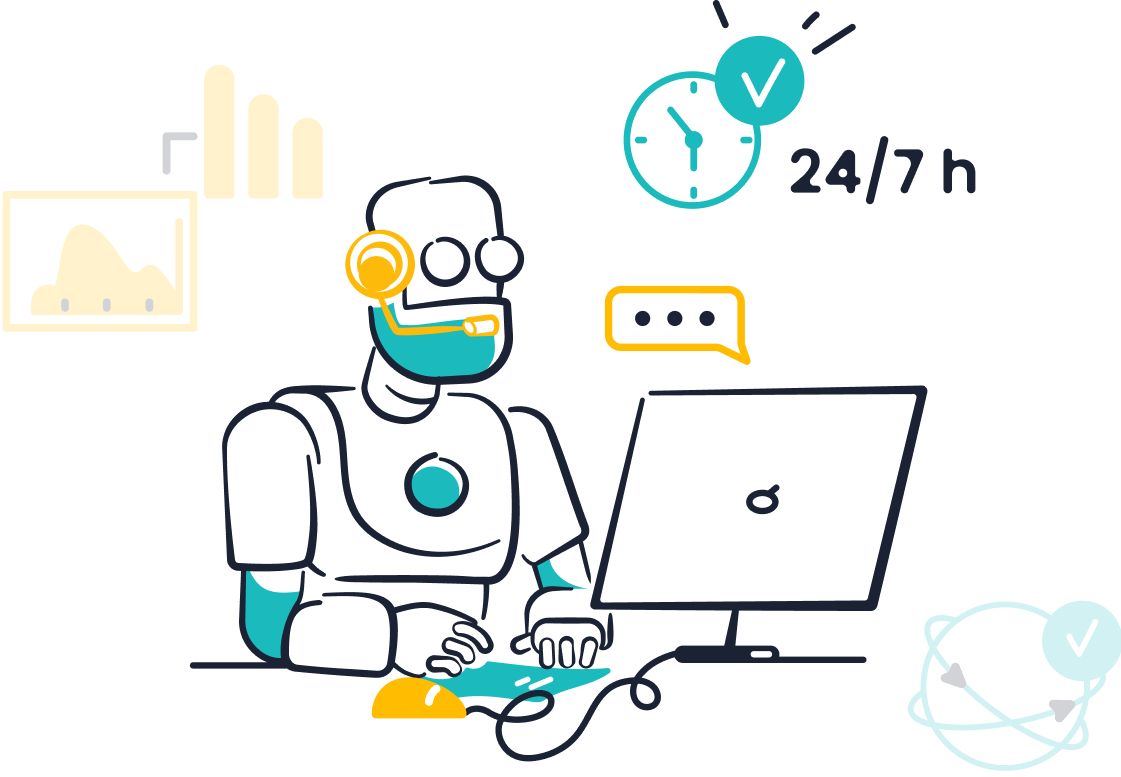
Smarter customer service combines AI, data insights, and customer-centric strategies to transform how you interact with customers. It scales easily, works across multiple channels, and adapts to your needs. This approach matters because poor customer service costs U.S. companies $75 billion annually, while improving customer experience can boost revenue by 10-15%. Tools like Sobot’s AI-powered solutions help businesses meet rising expectations, enhance satisfaction, and stay competitive. With real-time analytics and self-service options, smarter customer service ensures you deliver faster, more personalized support that builds loyalty and drives success.
Key Features of Smarter Customer Service
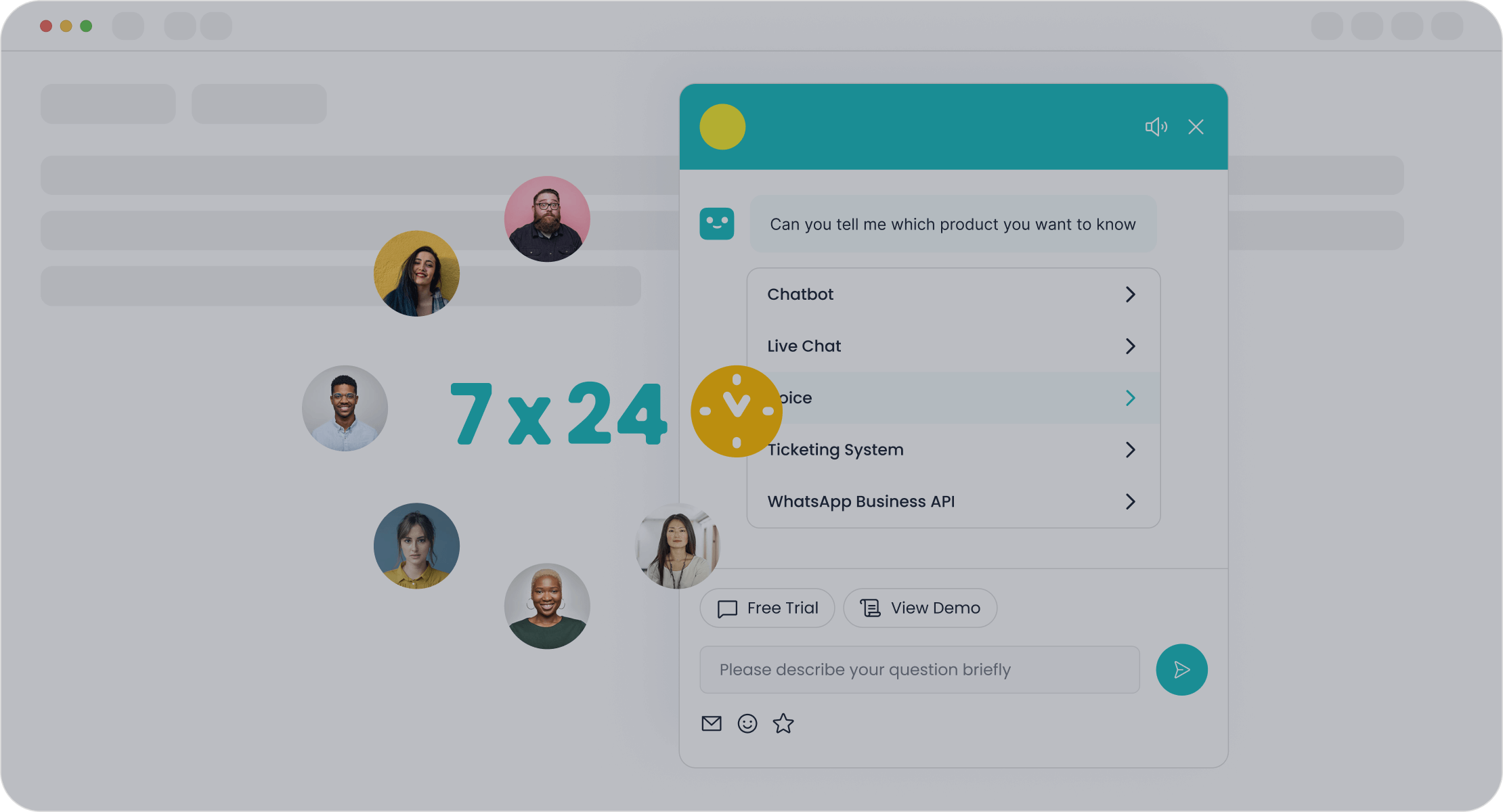
Personalization Through AI and Data Insights

Personalization is the cornerstone of smarter customer service. AI-powered tools analyze customer data to understand preferences, behaviors, and needs. This allows you to deliver tailored experiences that resonate with your audience. For example, Sobot’s AI Chatbot uses advanced algorithms to provide multilingual support and instant replies based on customer intent. It doesn’t just answer questions; it anticipates them, creating a seamless interaction that feels personal.
Studies show that nearly 70% of retailers credit AI for boosting annual revenue, while over 25% of financial services companies use AI to enhance customer experiences. Generative AI is also gaining traction, with 34% of financial services exploring its potential for customer engagement. These insights prove that personalization through AI isn’t just a trend—it’s a necessity for businesses aiming to thrive in today’s competitive landscape.
| Evidence Type | Description |
|---|---|
| Revenue Impact | Nearly 70% of retailers believe AI has boosted their annual revenue. |
| Customer Experience | More than one-fourth of financial services respondents use AI to enhance customer experiences. |
| Generative AI Exploration | 34% of financial services respondents are exploring generative AI for customer engagement. |
Automation for Efficiency with Tools Like Sobot Chatbot

Automation transforms how you manage customer interactions. Tools like Sobot’s AI Chatbot handle repetitive queries, freeing your team to focus on complex issues. This chatbot operates 24/7, ensuring customers receive immediate support regardless of time zones. Its no-code setup makes it easy to deploy, while its proactive messaging boosts conversions by 20%.
AI solutions also reduce operational costs by automating help-desk support. Real-time responses improve customer satisfaction, and businesses can measure ROI through efficiency gains and higher satisfaction scores. With smarter customer service automation, you save time, cut costs, and deliver consistent quality.
Omnichannel Support for Seamless Customer Experiences
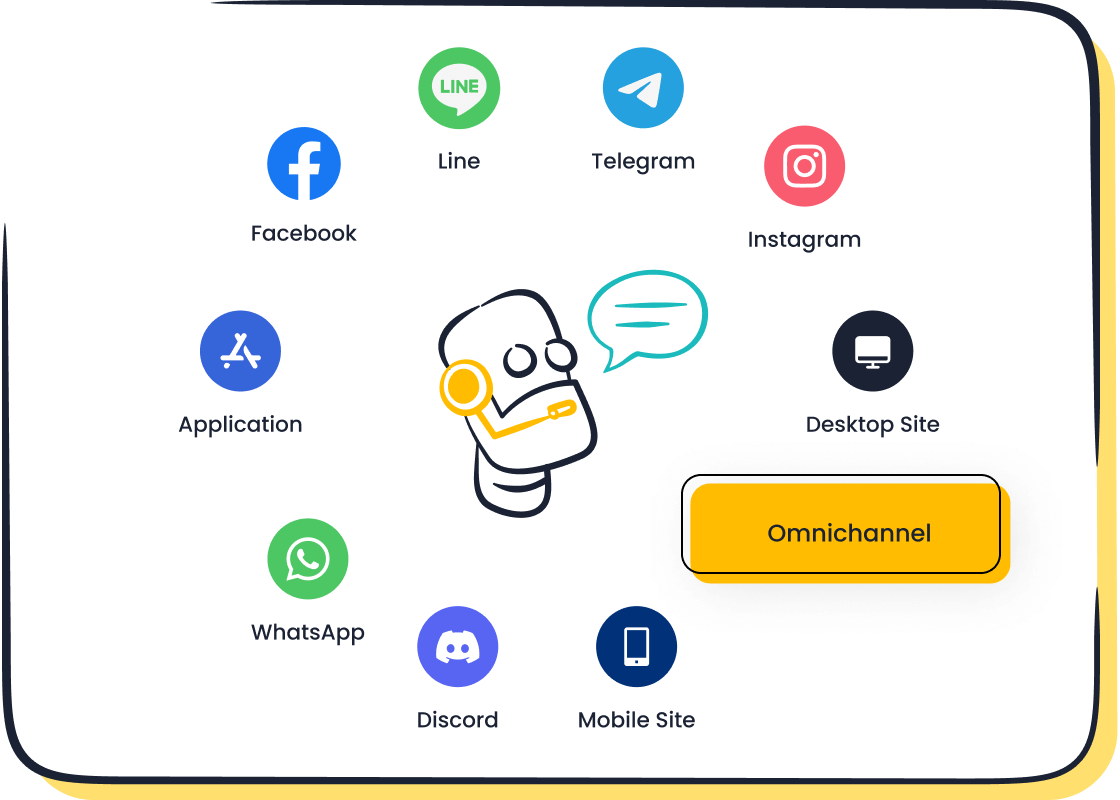
Omnichannel support ensures customers can interact with your brand across multiple platforms without losing context. Whether they start a conversation on social media and continue via live chat or email, the experience remains connected. Sobot’s solutions unify communication channels, allowing you to manage inquiries from WhatsApp, SMS, and more—all from one platform.
Statistics highlight the importance of omnichannel strategies:
- 90% of consumers expect seamless interactions across channels.
- 88% of shoppers are likely to return to businesses offering connected omnichannel experiences.
- Personalized omnichannel strategies increase customer satisfaction by 20%.
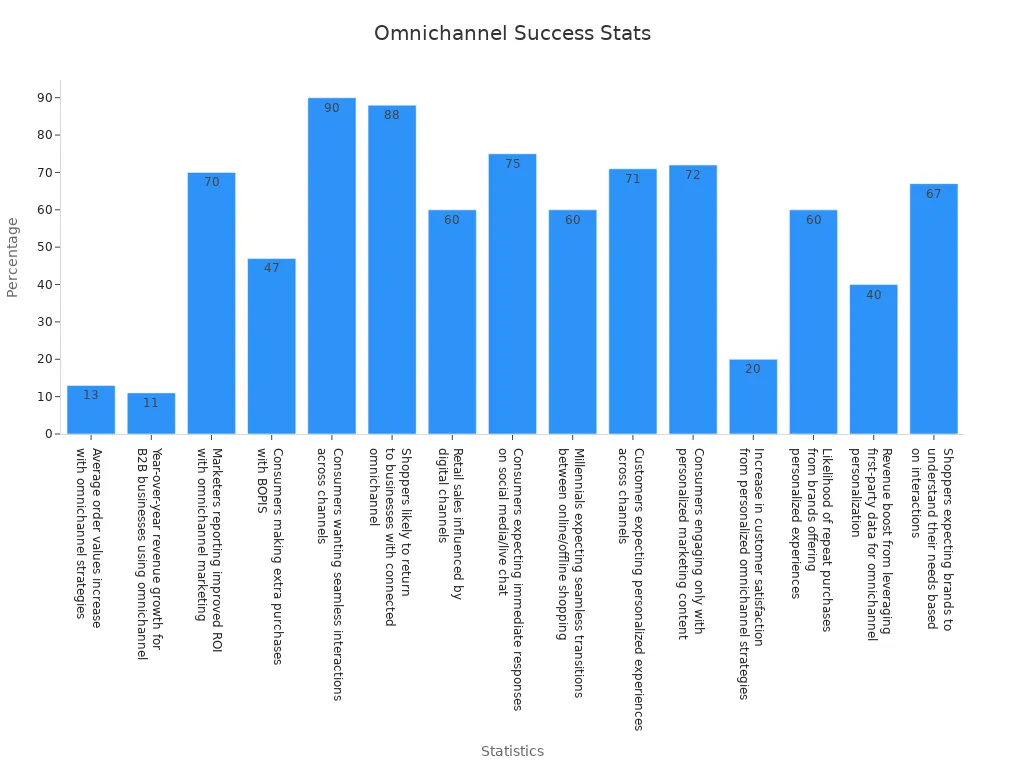
Sobot’s omnichannel tools empower you to meet these expectations effortlessly. By integrating first-party data, you can personalize experiences further, boosting revenue by up to 40%.
Proactive Problem-Solving to Anticipate Customer Needs
Proactive problem-solving is a key element of smarter customer service. It involves anticipating issues before they arise and addressing them to improve customer satisfaction. By identifying patterns and potential concerns early, you can reduce complaints and create a smoother experience for your customers.
How Proactive Problem-Solving Works
Proactive strategies rely on tools and techniques that help you stay ahead of customer needs. Predictive analytics, for example, allows you to analyze data and spot trends that might lead to problems. This enables you to take action before customers even notice an issue. Regular training for your customer service team ensures they are equipped with the latest problem-solving methods, making them more effective in handling inquiries.
Tip: Setting up a feedback loop encourages customers to share their experiences. This helps you adjust your services and address concerns quickly.
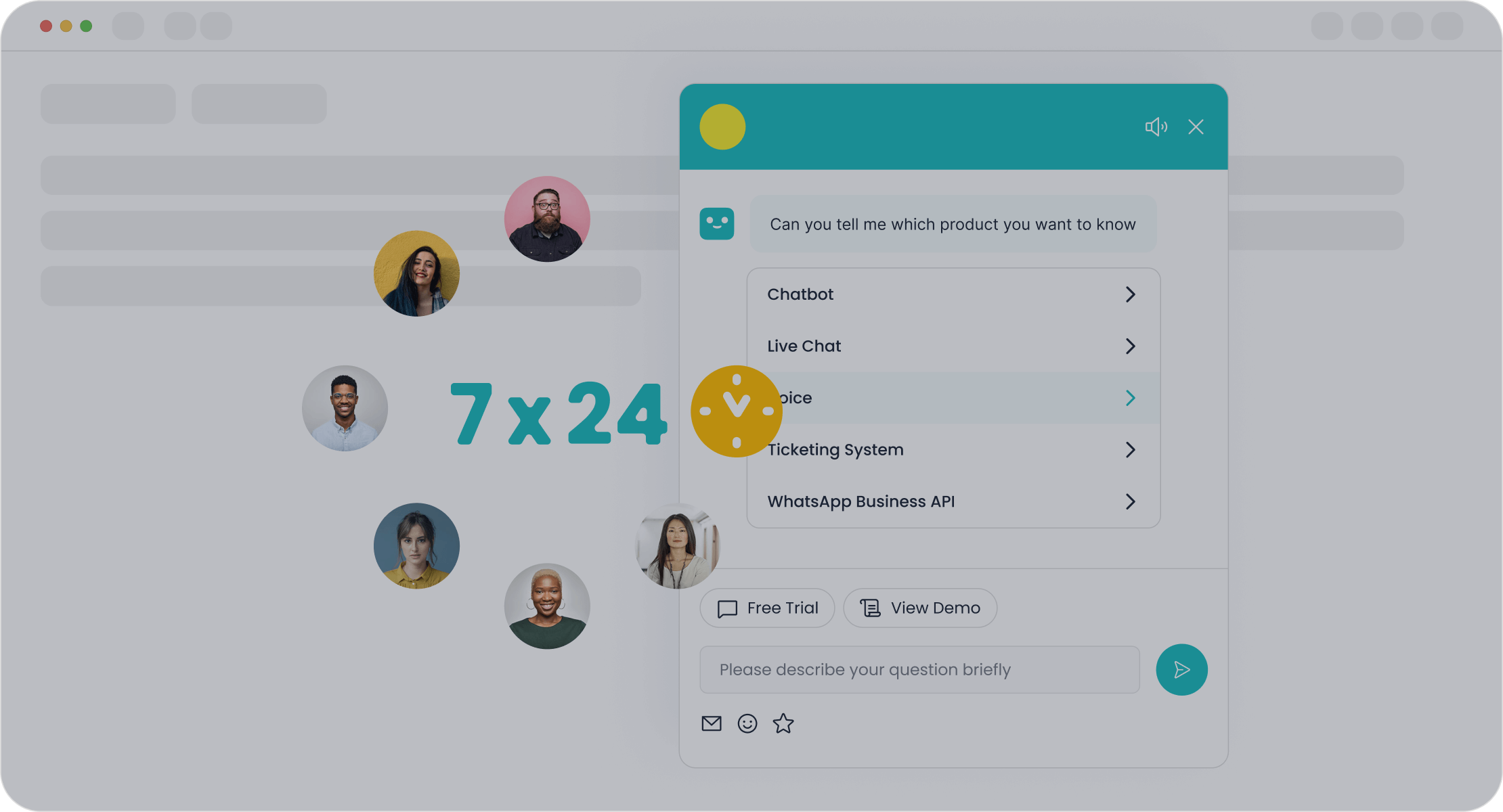
Automated tools like Sobot’s AI Chatbot also play a vital role. The chatbot provides instant assistance, solving repetitive queries and freeing your team to focus on complex problems. Its ability to operate 24/7 ensures customers always have access to support, reducing frustration and enhancing satisfaction.
Benefits of Proactive Problem-Solving
Proactive customer service offers several advantages:
- It reduces the volume of complaints by addressing issues before they escalate.
- Predictive analytics helps you identify areas of concern and take preventive measures.
- Automated tools provide instant support, minimizing the need for human intervention.
- Feedback loops allow you to continuously improve your services based on customer input.
- Regular training ensures your team stays updated with effective problem-solving techniques.
When you proactively resolve issues, you not only enhance customer satisfaction but also strengthen your business reputation. Customers appreciate businesses that anticipate their needs and deliver seamless experiences. This approach fosters loyalty and drives growth.
Real-World Impact
Being proactive about fixing complaints and making customers happy can significantly enhance your business's reputation and growth. For example, by using predictive analytics and automated tools, you can improve operational efficiency while ensuring customers feel valued. Businesses that adopt proactive strategies often see higher satisfaction rates and fewer complaints, leading to long-term success.
Proactive problem-solving is more than just a strategy; it’s a mindset that transforms how you interact with customers. By anticipating their needs, you create a foundation for smarter customer service that builds trust and loyalty.
Benefits of Smarter Customer Service
Enhanced Customer Satisfaction and Loyalty
Smarter customer service helps you create meaningful connections with your customers. When you provide fast, accurate, and personalized support, customers feel valued. This builds trust and encourages them to return. For example, tools like Sobot’s AI Chatbot offer 24/7 assistance, ensuring customers always receive help when they need it. By solving issues quickly and efficiently, you can reduce frustration and improve satisfaction.
Loyal customers are more likely to recommend your business to others. Studies show that even a small improvement in customer satisfaction can lead to significant increases in operating profit. When customers feel heard and appreciated, they stay loyal, helping your business grow.
Improved Brand Reputation and Trust
Your reputation depends on how well you treat your customers. Smarter customer service ensures you deliver consistent and reliable support across all channels. This consistency builds trust. Customers know they can rely on you, whether they contact you through email, live chat, or social media.
Proactive problem-solving also strengthens your reputation. By addressing issues before they escalate, you show customers that you care about their experience. Sobot’s omnichannel tools help you provide seamless interactions, which 88% of shoppers say makes them more likely to return. A strong reputation attracts new customers and keeps existing ones loyal.
Increased Operational Efficiency and Cost Savings
Smarter customer service technologies improve efficiency while reducing costs. Automated tools like Sobot’s AI Chatbot handle repetitive tasks, freeing your team to focus on complex issues. This reduces the need for large support teams and lowers onboarding and training costs by over 40%.
Studies reveal that implementing chatbot services can cut contact volume by 50% and reduce the average cost of contact by 10-20%. These tools also operate 24/7, ensuring customers receive support anytime. Faster response times and accurate solutions enhance satisfaction while saving resources. By adopting smarter customer service, you can achieve higher productivity and significant cost savings.
Better Business Outcomes and Revenue Growth
Smarter customer service directly impacts your business outcomes by driving revenue growth. When you deliver exceptional customer experiences, you encourage repeat purchases and build long-term loyalty. Customers who feel valued are more likely to recommend your brand, increasing your market reach.
Advanced technologies like AI and data analytics play a crucial role in achieving these results. For example, companies using generative AI help agents resolve issues faster and more effectively. This approach improves efficiency and enhances customer satisfaction. High-performing organizations also use customer service insights to refine their processes, leading to better decision-making and higher profitability.
| Statistic | Description |
|---|---|
| 82% | Companies are 82% more likely to use generative AI to help agents resolve customer issues faster and more effectively. |
| 87% | Companies are 87% more likely to implement technology to personalize digital channels. |
| 57% | High-performing organizations are 57% more likely to use customer service insights to refine enterprise processes. |
Personalized interactions further boost revenue. When you tailor your services to meet individual needs, customers feel understood. This personalization increases their likelihood of making purchases. Businesses implementing technology to personalize digital channels see significant improvements in customer engagement and sales.
Proactive problem-solving also contributes to revenue growth. By addressing issues before they escalate, you reduce churn and improve retention rates. Satisfied customers stay loyal, and loyal customers spend more. These strategies create a ripple effect, enhancing your brand reputation and attracting new customers.
Smarter customer service is not just about solving problems. It’s about creating meaningful connections that drive business success. By leveraging advanced tools and insights, you can achieve sustainable growth and stay ahead in a competitive market.
Strategies to Implement Smarter Customer Service
Leverage AI Solutions Like Sobot Chatbot
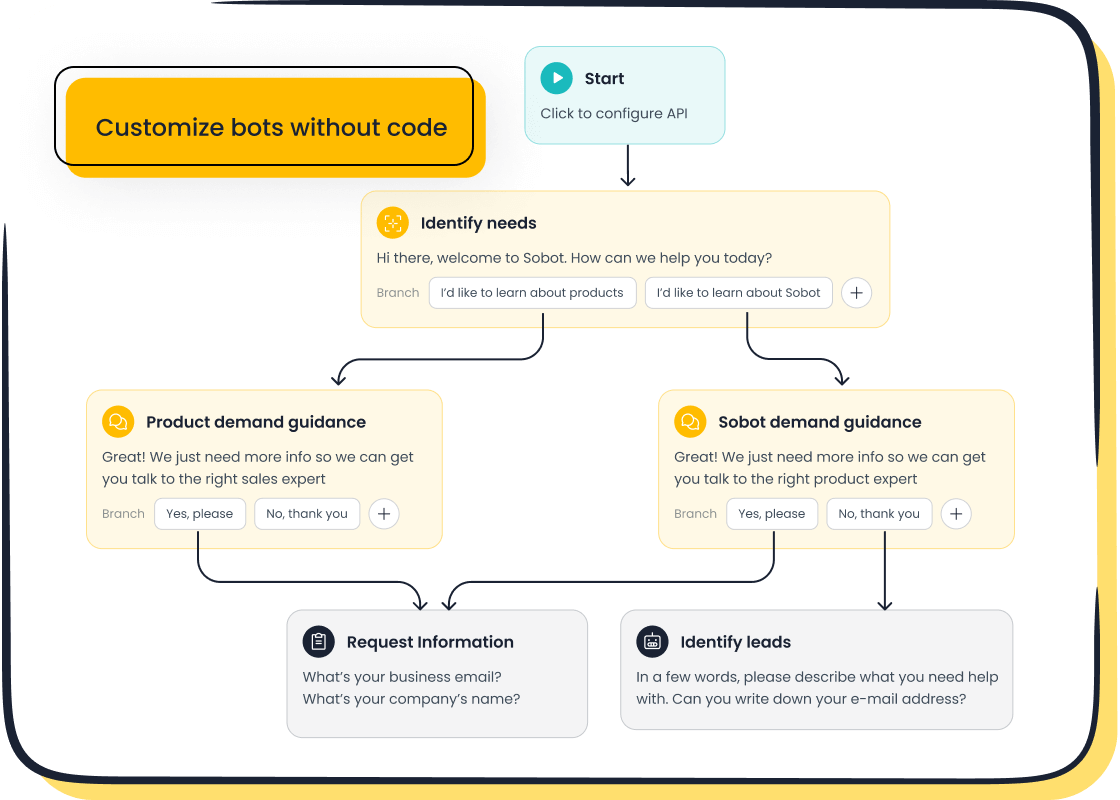
AI solutions are transforming customer service by automating repetitive tasks and enhancing efficiency. Tools like Sobot’s AI Chatbot empower you to handle customer inquiries 24/7, ensuring immediate responses and reducing wait times. This chatbot doesn’t just answer questions; it learns from interactions to provide smarter, more personalized support. Its multilingual capabilities and no-code setup make it accessible for businesses of all sizes.
The benefits of leveraging AI solutions are well-documented:
- AI-powered automation significantly improves operational efficiency by handling repetitive tasks.
- Smaller companies can provide high-quality service with limited resources.
| Case Study Description | Key Outcomes |
|---|---|
| Reduced inbound discussion volume by 20% and increased positive feedback to 96% | Improved customer satisfaction and operational efficiency |
| Over 80% of answers are correct and 95% customer satisfaction | Effective handling of customer inquiries |
| 22.2% of customer questions answered autonomously, CSAT score of 97% | Enhanced self-service capabilities and customer satisfaction |
| 85% of problems solved, 99% customer happiness | High effectiveness in problem resolution |
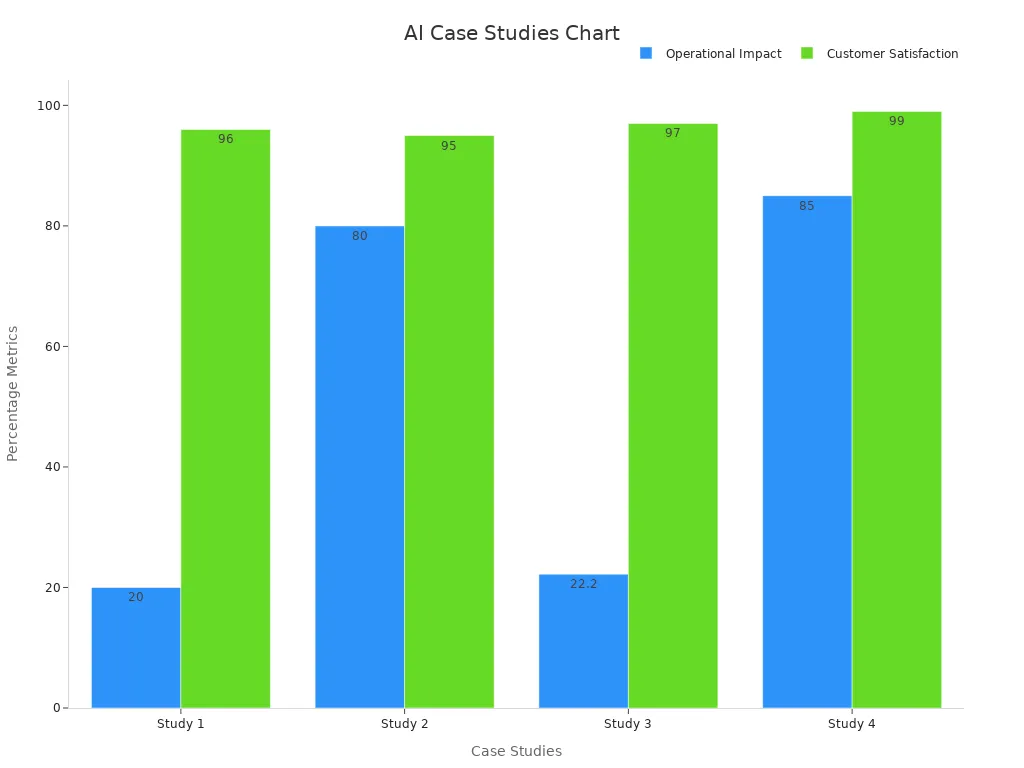
By integrating AI solutions like Sobot Chatbot, you can reduce inbound inquiries, improve customer satisfaction, and free your team to focus on complex issues. This approach ensures smarter customer service that meets modern expectations.
Train Employees in Customer-Centric Practices
Your employees play a crucial role in delivering exceptional customer service. Training them in customer-centric practices ensures they understand how to meet customer needs effectively. Start by fostering empathy and teaching your team to respond to emotional cues. Encourage them to go beyond basic problem-solving by understanding each customer’s goals and challenges.
Here are ten best practices for customer-centric training:
- Prioritize Customer Empathy: Understand and respond to customers' emotional needs.
- Do Extra Homework on Your Customers: Show commitment by understanding their operations.
- Meet with Customers In Person: Strengthen relationships through direct engagement.
- Optimize Your Customer Relationship Management (CRM) System: Use CRM for personalized customer experiences.
- Strive to Understand Each Customer’s ‘Big Picture’: Help customers achieve their larger goals.
- Reimagine How You Add Value for Your Customers: Use every interaction to learn and add value.
- Prioritize Customer Relationship Building: Focus on ongoing relationship strategies.
- Seek Ways to Achieve Balanced Outcomes: Collaborate for solutions that benefit all parties.
- Understand that Your Employee Culture Benefits Too: A customer-centric approach enhances internal culture.
- Embrace an Organizationwide Cultural Shift: Foster a company-wide commitment to customer-centricity.
When your team adopts these practices, they create meaningful connections with customers. This not only improves satisfaction but also builds loyalty, ensuring long-term success.
Integrate Advanced Technology and Omnichannel Tools
Advanced technology and omnichannel tools are essential for delivering seamless customer experiences. These tools unify communication channels, allowing you to manage interactions across email, phone, chat, and social media from a single platform. Sobot’s omnichannel solutions, for example, ensure consistent service by integrating customer data and history into one system.
| Technology Type | Description |
|---|---|
| Contact center platforms | Handle voice, chat, and messaging interactions. |
| Help desk software | Tracks support tickets and manages workflows. |
| CRM systems | Provides access to customer history and context for service teams. |
| AI-driven chatbots | Offers automated assistance to customers. |
| Self-service knowledge bases | Allows customers to find answers independently. |
| Omnichannel support tools | Unifies service across email, phone, chat, and social media. |
Omnichannel tools also enhance personalization. By integrating first-party data, you can tailor interactions to individual preferences. For example:
- AI-powered service tools like Einstein Bot provide advanced insights for improved service delivery.
- Customizable dashboards allow you to tailor reports to meet organizational needs.
These technologies ensure smarter customer service by streamlining operations and improving customer satisfaction. They also help you stay competitive in a fast-paced market.
Foster a Culture of Customer-Centricity Across Teams
Creating a customer-centric culture across your teams transforms how your business delivers value. It ensures every employee, regardless of their role, prioritizes customer needs. This mindset fosters collaboration, improves service quality, and strengthens customer relationships.
Why Customer-Centricity Matters
Customer-centric companies consistently outperform their competitors. Studies reveal that businesses focusing on customer needs experience a 60% higher profitability compared to those that don’t. This approach aligns your team’s efforts with your customers’ expectations, leading to better outcomes for everyone involved.
| Statistic | Impact |
|---|---|
| 60% more profitable | Customer-centric companies vs. non-focused companies |
When your teams embrace customer-centricity, they anticipate and address customer needs effectively. Predictive analytics, for instance, helps reduce service issues by 20%. This proactive approach also boosts customer loyalty by 30%, as customers feel valued and understood.
| Statistic | Impact |
|---|---|
| 20% reduction in service issues | Businesses using predictive analytics |
| 30% increase in customer loyalty | Anticipating and addressing customer needs |
Steps to Foster a Customer-Centric Culture
-
Define Clear Goals
Start by setting clear objectives that align with customer satisfaction. Share these goals with your teams to ensure everyone understands their role in achieving them. -
Empower Employees
Equip your teams with the tools and training they need to succeed. For example, Sobot’s omnichannel solutions provide a unified platform for managing customer interactions, making it easier for employees to deliver consistent service. -
Encourage Collaboration
Break down silos between departments. When sales, marketing, and support teams work together, they create a seamless experience for your customers. -
Reward Customer-Focused Behavior
Recognize and reward employees who go above and beyond for customers. This reinforces the importance of customer-centricity and motivates others to follow suit. -
Leverage Technology
Use smarter customer service tools like AI chatbots to streamline operations. These tools handle repetitive tasks, allowing your team to focus on building meaningful connections with customers.
Building Long-Term Success
Fostering a customer-centric culture is not a one-time effort. It requires ongoing commitment and regular evaluation. Gather feedback from your customers and employees to identify areas for improvement. Use this feedback to refine your strategies and ensure your teams stay aligned with customer needs.
When you prioritize customer-centricity, you create a foundation for smarter customer service. This approach not only enhances satisfaction but also drives loyalty and long-term growth.
Real-World Examples of Smarter Customer Service
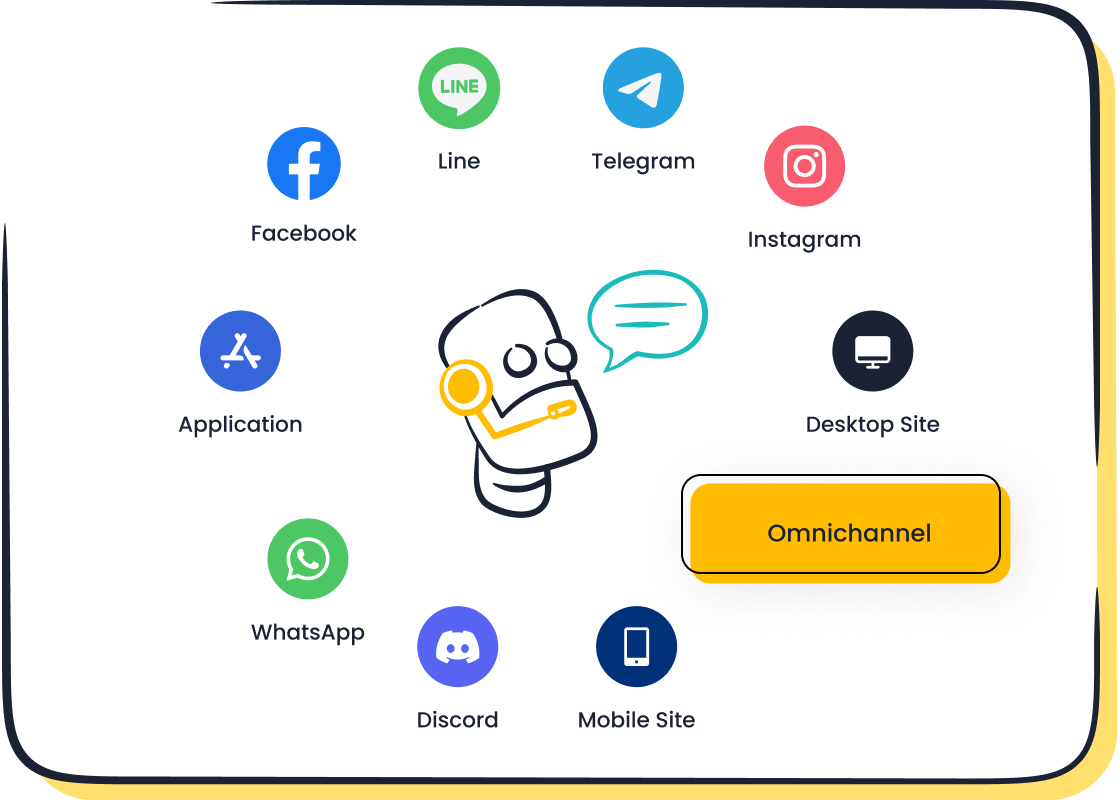
Case Study: Samsung’s Success with Sobot’s Contact Center Solution
Samsung, a global leader in technology, faced challenges managing high volumes of customer inquiries across multiple channels. To address this, the company implemented Sobot’s all-in-one contact center solution. This platform unified Samsung’s communication channels, enabling agents to handle inquiries seamlessly without switching systems. By integrating with internal tools like ERP and ticketing systems, Sobot’s solution provided agents with comprehensive customer data, reducing repetitive questions and improving efficiency.
The results were remarkable. Samsung achieved a 30% increase in agent efficiency and a 97% customer satisfaction rate. VIP customers benefited from customized video support, further enhancing their experience. This case demonstrates how smarter customer service tools like Sobot’s omnichannel platform can transform operations and elevate customer satisfaction.
Example: Omnichannel Support in Retail Using AI
Retail businesses thrive on seamless customer experiences. Omnichannel support ensures customers can interact with your brand across platforms like WhatsApp, email, and social media without losing context. Estee Lauder, for instance, implemented an omnichannel solution to unify its communication channels. This approach empowered agents to deliver personalized service, reduced response times, and provided deeper customer insights.
Sobot’s omnichannel tools offer similar benefits. They integrate customer data into a single platform, allowing you to provide consistent and personalized support. Studies show that 88% of shoppers are more likely to return to businesses offering connected omnichannel experiences. By adopting smarter customer service strategies, you can boost satisfaction and drive loyalty.
| Company | Implementation Details | Benefits |
|---|---|---|
| Bezeq | Automated customer service with Glassix chatbot. | 35% of technical inquiries deflected, 24/7 support, proactive problem detection, cost savings. |
| Holmes Place | Unified messaging platform to handle member inquiries. | Reduced call volume, faster responses, improved member experience, centralized communication. |
| Estee Lauder | Omnichannel support through Glassix across various platforms. | Empowered agents, personalized service, faster response times, deeper customer insights. |
Success Story: Proactive Problem-Solving in Tech Support
Proactive problem-solving transforms tech support by addressing issues before they escalate. Continuous performance monitoring and regular system audits help identify risks early. For example, businesses using predictive analytics reduce service issues by 20%, ensuring smoother operations.
Sobot’s AI Chatbot plays a key role in proactive support. It operates 24/7, solving repetitive queries instantly and freeing your team to focus on complex problems. This approach minimizes disruptions, enhances client satisfaction, and supports long-term success.
| Metric | Description |
|---|---|
| Performance monitoring | Continuous tracking of system metrics against business objectives helps in real-time assessment of performance impact. |
| Regular system audits | Scheduled audits identify potential risks before they become issues, ensuring system reliability. |
| Continuous improvement | Utilizing performance data to refine processes fosters a more effective support framework. |
Tip: Proactive strategies not only reduce complaints but also build trust. Customers value businesses that anticipate their needs and deliver seamless solutions.
Smarter customer service, powered by tools like Sobot’s AI solutions, ensures you stay ahead of customer expectations while driving growth.
Why Businesses Should Adopt Smarter Customer Service
Staying Competitive in a Customer-Driven Market
The modern market revolves around customer expectations. To stay competitive, you need smarter customer service strategies that empower your team and enhance customer experiences. Customers today are more informed than ever. Over 60% of retail managers believe customers know more than in-store associates. This shift in knowledge has changed how customers interact with businesses. In 2010, 21% of shoppers relied on store employees for information, but by 2011, this dropped to 13%.
| Key Insight | Description |
|---|---|
| Customer Knowledge | Over 60% of retail managers believe customers are better informed than in-store associates. |
| Shift in Information Sources | In 2010, 21% of shoppers relied on in-store employees for information; by 2011, this dropped to 13%. |
| Importance of Employee Empowerment | Customers prefer experiences where sales associates use technology to enhance service. |
Smarter customer service tools, like AI-powered solutions, help you bridge this gap. They empower employees with technology, ensuring they deliver accurate and personalized support. By adopting these strategies, you can meet customer expectations and maintain a competitive edge.
Building Long-Term Relationships with Customers
Long-term relationships are the foundation of sustainable business growth. Smarter customer service helps you build these connections by prioritizing customer satisfaction and loyalty. Tools like CRM systems play a vital role in maintaining these relationships. Studies show CRM positively impacts business sustainability across industries, from automotive to MSMEs.
| Study | Findings |
|---|---|
| Ahuja et al. (2019) | CRM is a significant factor in adopting Sustainable Manufacturing practices in multi-automotive companies. |
| Vesal et al. (2021) | CRM positively impacts business sustainability in micro, small, and medium enterprises (MSMEs). |
| Bahri-Ammari and Soliman (2016) | Highlights the role of CRM and service quality in maintaining sustainable customer relationships. |
| Guerola-Navarro et al. (2021) | Developed a model showing the correlation between CRM and business sustainability. |
| Bhat and Darzi (2018) | Analyzed CRM capability's role in achieving sustainable competitive advantage. |
| Pohludka and Štverková (2019) | Conducted a survey indicating the necessity of CRM for long-term business sustainability. |
When you focus on building relationships, customers feel valued. This encourages loyalty and repeat business, ensuring your company thrives in the long run.
Adapting to Future Trends in Customer Service
The future of customer service lies in adaptability. Smarter customer service strategies prepare you for evolving trends by leveraging data-driven approaches and advanced technologies. These strategies help you make informed decisions, understand consumer behavior, and integrate AI-powered tools for continuous improvement.
- Data-driven approaches enhance adaptability in customer service strategies.
- Understanding consumer behavior ensures businesses meet changing market demands.
- Advanced analytics and AI reshape customer service, emphasizing agility and learning.
By adopting smarter customer service, you position your business to adapt to future challenges. This ensures longevity and keeps you ahead in a rapidly changing market.
Smarter customer service is essential for meeting customer expectations and driving business success. It enhances satisfaction, builds loyalty, and improves operational efficiency. Studies show that up to 70% of customer service tasks can be automated with AI, saving time and resources. Tools like Sobot’s AI Chatbot offer advanced features such as 24/7 availability, multi-language support, and predictive analytics, outperforming many alternatives.
| Feature | Sobot Chatbot | Other AI Tools |
|---|---|---|
| Response Automation | Excellent | Varies |
| 24/7 Availability | Yes | Limited |
| Real-Time Engagement | High | Moderate |
By adopting smarter customer service strategies, you can stay competitive, foster lasting relationships, and position your business for long-term growth.
FAQ
What is smarter customer service?
Smarter customer service uses AI, data insights, and customer-focused strategies to improve interactions. It works across multiple channels, personalizes experiences, and anticipates customer needs. This approach helps you meet expectations, boost satisfaction, and achieve better business outcomes.
How does Sobot’s AI Chatbot improve efficiency?
Sobot’s AI Chatbot automates repetitive tasks, operates 24/7, and provides instant responses. It reduces agent workload, improves productivity by 70%, and cuts costs by up to 50%. Its no-code setup makes it easy to deploy, saving you time and resources.
Why is omnichannel support important?
Omnichannel support connects all communication channels, ensuring seamless customer experiences. Customers can switch between platforms like email, chat, or social media without losing context. This approach improves satisfaction, builds loyalty, and increases the likelihood of repeat business.
Can Sobot’s solutions handle multilingual support?
Yes! Sobot’s AI Chatbot supports multiple languages, allowing you to interact with customers in their preferred language. This feature ensures inclusivity, enhances customer satisfaction, and helps you reach a broader audience.
How do proactive strategies benefit customer service?
Proactive strategies anticipate customer needs and solve issues before they arise. Predictive analytics and tools like Sobot’s Chatbot reduce complaints, improve satisfaction, and build trust. Customers appreciate businesses that address concerns early, fostering loyalty and long-term relationships.
See Also
Enhancing Efficiency With AI-Powered Customer Service Tools
The 10 Leading Customer Service Software Solutions for 2024
Transforming Support With AI-Driven Customer Service Agents
